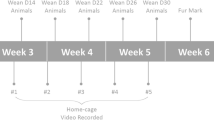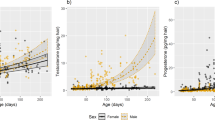Abstract
THE second paragraph in Brown and Dinsley's communication might be construed to refer to my communication on the effects of strain and group size on the response of mice to ‘Seconal’ anæsthesia. If this is indeed true, I would like to point out that I nowhere suggest that “because results with a particular anæsthetic using two inbred strains and their reciprocal hybrids suggest superior development homeostasis of the heterozygotes all other first crosses will fall into line”. In fact, if Table 1 of that communication is referred to it can be seen that particular environmental conditions can result in equal amounts of variation being shown by both the heterozygote and the homozygote, for example, Part 2, two per cage, all strains, and Part 2, eight per cage CE/CE♂ × CBA♀ F1.
This is a preview of subscription content, access via your institution
Access options
Subscribe to this journal
Receive 51 print issues and online access
$199.00 per year
only $3.90 per issue
Buy this article
- Purchase on Springer Link
- Instant access to full article PDF
Prices may be subject to local taxes which are calculated during checkout
Similar content being viewed by others
Author information
Authors and Affiliations
Rights and permissions
About this article
Cite this article
MACKINTOSH, J. Homeostasis and the F1 Hybrid. Nature 196, 910–911 (1962). https://doi.org/10.1038/196910c0
Issue Date:
DOI: https://doi.org/10.1038/196910c0
Comments
By submitting a comment you agree to abide by our Terms and Community Guidelines. If you find something abusive or that does not comply with our terms or guidelines please flag it as inappropriate.



